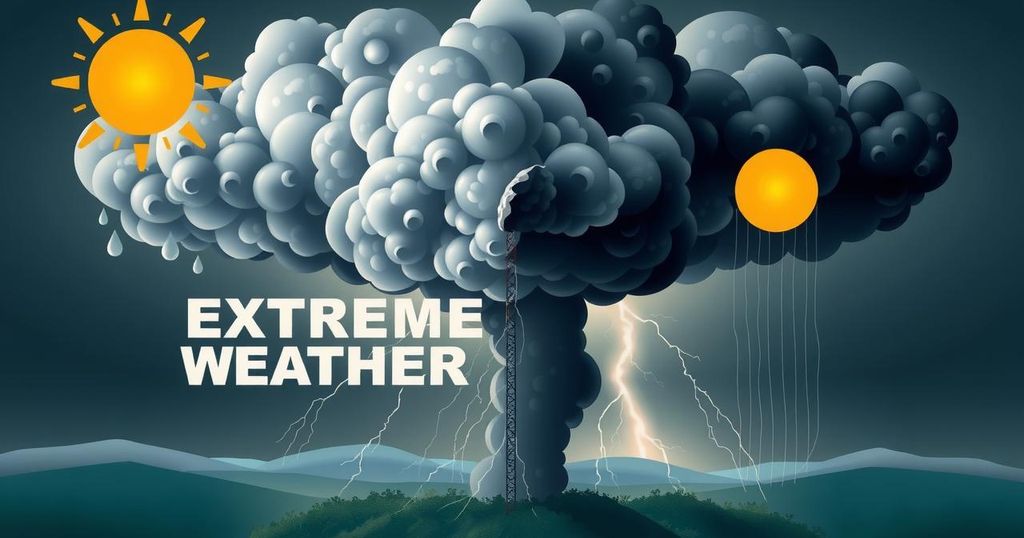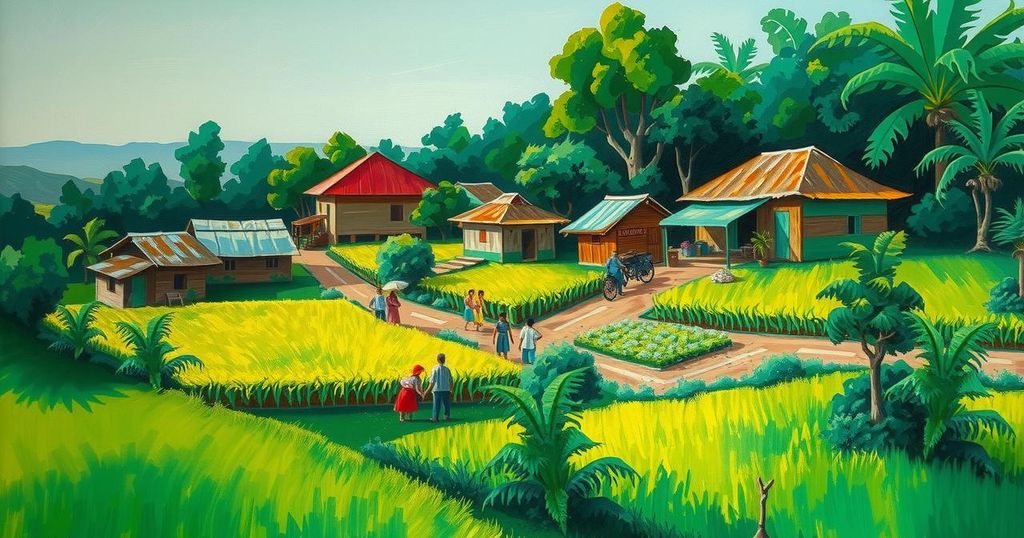Global Weather Hazards Summary: January 23-29, 2025
La Niña conditions are present in the Pacific, leading to severe weather impacts. Eastern southern Africa faces flooding, while Somalia suffers from drought. Central Asia experiences cold temperatures. Tropical Cyclone DIKELEDI has caused flooding in Madagascar and Mozambique, with high temperatures expected in southern Africa.
The Global Weather Hazards Summary for late January 2025 highlights significant weather patterns across various regions. La Niña conditions are influencing the equatorial Pacific, contributing to ongoing flooding risks in eastern southern Africa and Central America’s Atlantic coasts, alongside persistent dryness in southern Colombia. Furthermore, Central Asia is experiencing notably cold temperatures.
In Africa, heavy rainfall has induced flooding in eastern southern Africa, while drought has afflicted Somalia due to inadequate precipitation. In South Sudan, the Sudd wetlands remain inundated. Ongoing drought is noted in central and southern Somalia, exacerbated by irregular rainfall since September. Notably, Madagascar’s eastern regions are also facing drought conditions.
The upcoming week is expected to bring unusually high temperatures in southern Mauritania, central Mali, and parts of southern Africa, impacting central Kenya and Namibia. Flooding continues in the east-central Democratic Republic of Congo, and Tropical Cyclone DIKELEDI has caused significant flooding in northern Madagascar and Mozambique. Additionally, recent heavy rains have resulted in widespread flooding across Botswana and Zimbabwe.
This Global Weather Hazards Summary provides crucial insights into ongoing weather phenomena affecting different regions in late January 2025. Factors such as La Niña conditions in the Pacific play a vital role in creating distinct weather patterns, including excessive rainfall, drought, and temperature fluctuations. An understanding of these conditions is essential for forecasting potential disasters and preparing affected communities for adverse effects.
The Global Weather Hazards Summary outlines significant weather challenges, including persistent flooding, drought, and temperature anomalies across various regions. Key areas affected include eastern southern Africa, Somalia, and Madagascar, where continued monitoring and preparedness are critical. Enhanced understanding of these patterns will aid in mitigating the impacts of such weather hazards.
Original Source: reliefweb.int




Post Comment